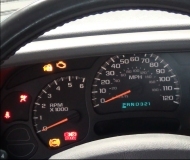Three things come to mind. For the code 1391, the best approach is to find a mechanic with a Chrysler DRB3 scanner. It will display live sensor data during a test drive including "present" or "no" for the camshaft position sensor and the crankshaft position sensor. That will tell you which signal is being lost. Most of the time the sensor fails by becoming heat-sensitive but it's also possible to have wiring problems. A corroded splice in the voltage feed wire to them or the ground return wire, and a corroded or spread terminal in a connector are the more common problems. The crankshaft position sensor uses a thick paper spacer to set the critical air gap. If you didn't use one, that can cause intermittent loss of signal. Many aftermarket replacements have a thin plastic rib molded to the end to set the gap. When reusing one of those, you're supposed to cut the rib off and use a new paper spacer.
A failing MAP sensor can cause the symptoms you described by sending an incorrect voltage signal. As long as the voltage remains between 0.5 and 4.5 volts, no fault code will be set, but that wrong voltage will tell the Engine Computer to command the wrong amount of fuel.
The third, less common cause is a collapsing fuel pickup screen in the gas tank. The engine will typically run fine for 15 - 20 minutes, then begin to starve for fuel. The engine will usually run fine at highway speeds but starve for fuel when the largest volume is pumped, which is during coasting. Once that happens, it can take some effort to get back up to highway speed but then it will run better. The clue is it will usually run better after turning the engine off for a few minutes. When a sensor becomes heat-sensitive, it usually gets worse after the hot engine has been off for a few minutes from something called "hot-soak". That's where there's no air flow and the heat from the engine migrates to the sensor and makes it hotter.
Wednesday, October 5th, 2011 AT 4:23 PM




